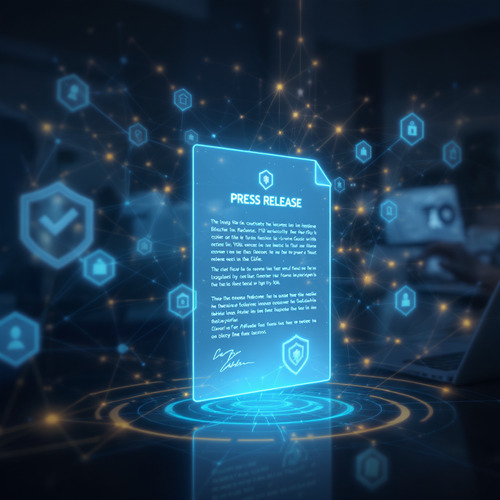
As part of its partnership with the Social Media Club, Wiztrust brings together communication directors to discuss the challenges of their profession. Crisis management is one of the facets of the job for modern communication directors. It is crucial during a crisis not to neglect internal communication, which must be based on transparency and employee engagement. The same applies to press relations. Building trust with journalists on a one-to-one basis remains essential in crisis management. This is why it is important not to succumb to the pressure of real-time communication, especially on social media. Thus, maintaining control over communication is vital.
Crisis Communication: A Key Part of the Dircom's Job
Crisis management is a significant aspect of the Dircom's role. With social media, detecting, anticipating, and containing crisis episodes have become critical challenges for organizational and corporate communication. To address this, it is essential to first identify and define high-risk situations. According to Michael Chefles, Director of Communication at SNCF Intercités, the starting point of a crisis is often media attention, which alerts the company and marks the beginning of the event. Without media coverage, there is no crisis, adds Nathalie Desaix, Director of Communication at 20 Minutes.
Many organizations have established crisis cells or war rooms dedicated to managing these unpredictable events. This is the case at SNCF, a highly media-exposed company. "Even the slightest issue with a delayed train or a problem at a station quickly becomes a crisis," notes Michael Chefles. The company has identified risk areas, such as Lyon and Montparnasse stations, and peak periods like vacation departures and returns. During these times, "we are on high alert from 6 AM until the last train departs," he explains.
The spread of a crisis often begins on social media: "More and more customers tweet when a train is stuck, for example. This quickly escalates because journalists rapidly pick up on these messages, and it can reach high levels, sometimes even the government." This was the case during the recent malfunction at Montparnasse station, which prompted a complete overhaul of the crisis management system. Each region and major station has its own crisis cell, including a social media room, to respond quickly to crises.
At Aéroports de Paris, operational PCs on-site provide technical information to the corporate crisis cell.
Detecting and Anticipating Crises on Social Media, Responding in Traditional Media
To detect crises, communication directors rely on social listening tools. At Sanofi, social media monitoring was formalized a year ago with the acquisition of Radarly. "We conduct real-time monitoring of all web platforms and social media," explains Christophe Torrent, External Communication Manager at Sanofi. Two screens continuously display publications and keywords associated with the company on the web. The Brain and Spine Institute uses Meltwater, which aggregates data from sites and social media and identifies trends and audience behaviors using algorithms. 20 Minutes uses tools like CrowdTangle or Lead Insight to recognize and anticipate crisis situations on each social network.
"These tools also allow us to take a step back during a crisis. As communicators, we tend to follow people reacting on social media. So, these tools are useful for understanding the scope of an event beyond our circle," notes Nathalie Desaix, Director of Communication at 20 Minutes.
Although social media can be the source of a crisis, "it's the media that sets the pace," emphasizes Michael Chefles (SNCF). All participants stress the importance of personal relationships with journalists in crisis management.
« Nothing replaces human relationships with journalists," highlights Nathalie Desaix (20 Minutes).
At SNCF, the golden rule is to "always call back journalists" regardless of the situation. "When we see a crisis brewing, we contact identified journalists to try to defuse the situation," confirms Erwan Le Quilliec, Head of Crisis Communication at Aéroports de Paris.
Avoiding the Pressure of Real-Time Communication
If social media are a privileged place for alerts and measuring crises, they are also an essential channel for responding to crises. "We must be very careful about the pressure of real-time communication and urgency," warns Nathalie Desaix (20 Minutes).
Twitter is the network where crises often emerge, but it is also a network of insiders. "The danger is confusing reaction with precipitation," adds Christophe Torrent (Sanofi).
"We monitor social media extensively to try to contain the crisis. The goal is to prevent it from reaching the press," explains Alexia Lefeuvre, Global Communication Senior Manager at Novotel, who notes that "for some internet users, starting crises is a hobby!"
Real-time communication can have a negative effect and fuel the crisis rather than extinguish it. Nathalie Desaix recalls the case of a company whose live tweeting during a Cash Investigation broadcast was counterproductive.
« In a way, when it's a crisis, it's urgent to wait," says Alexia Lefeuvre (Novotel)
The reaction time on social media varies depending on the nature of the organization and the crisis. At Sanofi, "we don't react on social media. Medicines are not like other products. Pharmaceutical communication is legally regulated," explains Christophe Torrent.
Crisis Communication Transformed by Social Media
In the event of a crisis, communication goes through traditional channels such as press relations. Conversely, for companies with high media exposure or crises involving safety issues, social media can be the primary communication channel.
This is the case for Aéroports de Paris (ADP), "if a serious event occurs at one of our sites, we have the authorization, in agreement with the prefecture, to communicate to inform the public, particularly about access to airports," explains Erwan Le Quilliec. "We have a time objective: to react within 30 minutes." In such situations, "a tweet can reduce media pressure," he continues.
These communication elements are often taken up verbatim by the media and used as a source of information verification. At SNCF, the communication service has set up a content production studio for social media. Similarly, ADP has a studio. In the event of snowfall, a dedicated site aggregating practical information, videos, or infographics is pushed onto social media to quickly respond to media and public inquiries.
" It's important not to forget that journalists are also under the pressure of real-time communication," reminds Nathalie Desaix. In addition to producing internal content, the Director of Communication at 20 Minutes suggests leveraging influencers for crisis communication on social media.
ADP can rely on a community of about a hundred "avgeeks" influencers who are passionate about aviation. "We don't push statements or talking points through them, but they are included in our press operations," specifies Erwan Le Quilliec.
Relying on Internal Communication in Crisis Management
Another important aspect of crisis management discussed by several Dircoms is internal communication. The time when corporate communication was separated from external communication is over.
"There must be cohesion and transparency. We cannot deceive employees internally," emphasizes Valérie Lauthier, Director of Communication at Pierre & Vacances-Center Parcs.
In some cases, employees can be a support during a crisis. "On controversial topics, some of our employees have already spoken out on social media to defend their profession and company," she notes.
In some cases, employees can be a support during a crisis. "On controversial topics, some of our employees have already spoken out on social media to defend their profession and company," she notes.
In the event of a crisis, "it is essential to inform employees in advance to make them ambassadors," estimates Axelle de Chaillé, Deputy Director of Communication at the ICM.
For this foundation, which receives half of its budget from private donors, communication with donors is crucial.
"Before each donor recruitment campaign, we are on high alert on social media. What is said can have a significant impact on our donors, even the most loyal ones. So, we do advance communication work to inform them of the Institute's positions on sensitive topics," she explains.
Towards Centralized Communication
For Leonor Siney of Adecco, "there is a real issue with educating employees about what they can or cannot discuss on social media. Since they often feel the need to express themselves, we have implemented an internal tool. It's a very powerful collaborative intranet."
The corporate culture and the nature of crises influence how crisis communication is managed with traditional media. ADP and Adecco focus on centralized communication.
"We have a well-established crisis process. We do not expose our local spokespersons to the media; everything goes directly to the group," explains Leonor Siney of Adecco.
At Geodis, the approach is to "express ourselves as little as possible. We ensure that it remains local," explains Anette Rey, Director of Communication.
Similarly, at SNCF, if the crisis is minor, "we try to limit media statements to the local level." However, certain types of crises require unique communication, such as social or judicial crises. In the latter case, "we do media training with lawyers: they become the communicators for our company," points out Valérie Lauthier, Dircom of Pierre&Vacances-Center Parcs.
The Brétigny-sur-Orge tragedy profoundly impacted SNCF, leaving a lasting mark on how communication is handled.
Reputation Building During a Crisis
Participants agree that an organization's reputation is at stake during a crisis. These moments are when the brand image is built or destroyed.
"In these moments, we may also deal with new stakeholders. It's an opportunity to present ourselves, to say what we do... The way we communicate builds our reputation," notes Christophe Torrent of Sanofi.
However, crises can have a lasting impact on brand image, particularly due to SEO. For instance, Google's "Suggest" feature can have devastating effects. When a leader is permanently associated with a scandal, such as Carlos Ghosn, it can leave indelible marks.
« Google can leave indelible traces. That's why it's essential to work on referencing after a crisis," estimates Alexia Lefeuvre (Novotel)
The influence of search engines puts into perspective the impact of social media on crisis management. Most of what is found on Google after a crisis comes from media and press articles. Social media, especially Twitter, can be the source of crises but are primarily an echo chamber.


 On 28 April, 2025
On 28 April, 2025
 7 min
7 min